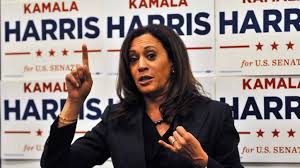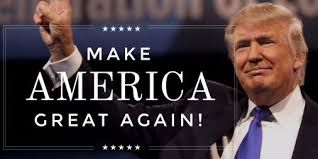"Beyond hatred, beyond fear, beyond being a “political” outsider, Trump’s campaign was accessible. He appealed to those who feel that they have been forgotten by the Democratic party..." -Miles De Rosa

Beyond hatred, beyond fear, beyond being a “political” outsider, Trump’s campaign was accessible. He appealed to those who feel that they have been forgotten by the Democratic party: people who used to support their families by working in mills and factories, mills and factories that have either left the country or just closed down. Trump came to them and told them what they wanted to hear. He promised to bring factory jobs back, and that everything they didn’t like about America would change when he takes office.
Hillary Clinton’s campaign, on the other hand, had a big focus helping those who are underserved in this country. She pushed heavily for women's and LGBT rights, as well as racial justice and gun control. In the debates she attacked Trump for his temperament, and experience, rather lack thereof.
Hillary cited economists supporting her economic method, had the facts and statistics to support her platform. She constructed sound, logical arguments about why she was better than Trump for this country. And still, Trump trounced her, using simple rhetoric and messaging.
This result left many with the question of how, how could a man like this take the election and the White House?
Trump, either through luck or careful planning, appealed to all of those in the Rustbelt who formerly worked in those factories, and who held no education beyond a high school diploma. People in these towns see people in Washington as people who haven’t worked for a living. They see people with an education as elitist, as thinking they are above others who have not been so fortunate.
People in these towns are also suffering. And it does not matter which economist Hillary says endorses her economic plan, or how much the tax money she puts into education will help their children. These people, when they voted, did not care about women's rights, or LGBT rights because they first needed to have their jobs back, and food back on the table.
White men living in the Rustbelt, rightfully or not, feel neglected in the country right now, and that was reflected in the way they voted.
In exit polls the people who voted for Trump admitted to thinking that he was not qualified or have the temperament to be president. But they were able to look past these miscommings because they, as a group, have one main concern. Jobs. Jobs that Trump promised to bring home. And he did not promise this with logic or evidence, he promised this with slogans like ”Make America Great Again.”
He also, in speeches, would build off that slogan, saying, “I’m going to make America wealthy again,” igniting hope in the rustbelt that those people will be wealthy again. Trump, in his speech outlining how to bring back jobs, called for us to “believe in America again.” Trump used rhetoric that suggested he was a genie, apt to grant all wishes.
The elitist view of Hillary Clinton in the democratic party certainly existed for some before this election but Trump made it a widespread belief, saying Hillary Clinton had taken all the “elitist” sides on hot button issues like immigration.
Trump also called into action the beliefs of the founding fathers frequently. He advocated for the trade that the founding fathers had dreamed of, and that did support the union in an agrarian southern economy and an industrial one in the north. Though, on the campaign trail Trump did disparage some of the founding fathers wishes, such as freedom of religion, and having America be a haven for all those in need.
NAFTA was a very large talking point for Trump, he regularly connected Bill Clinton’s trade deal to Hillary and blamed that for the loss of jobs (particularly manufacturing jobs). Currently there is a large divide among economists on the issue of NAFTA and whether it helped or hurt. But one’s thing for sure it wasn’t difficult to go through the campaign and find bites of Hillary disparaging NAFTA and agreeing there was a problem. The conclusion drawn by Trump had no other bases than a last name and a wedding ring, yet people listened.
This is just another example in the way Trump ran his campaign, telling people who had lost their jobs what had happened, how they have been neglected, how Hillary was going to make it all worse, and how he was going to fix everything. This strategy left the political world in shock, and has left the democratic party wondering where to go from here.
After Hillary took an unexpected loss, leaving Republicans with control of all three branches in our government (Legislative, Executive, and Judicial), many Democrats are wondering where do we go from here. Fortunately for Democrats, there are strong party leaders quickly emerging, including Kamala Harris (depicted at left), Corey Booker, and Chuck Schumer. As well as mainstays in the party such as Pelosi and Elizabeth Warren. Warren is expected to make an effort challenging Trump in 2020 but it is unlikely Pelosi will run, as she has never made a bid for the presidency.
Hillary Clinton’s campaign, on the other hand, had a big focus helping those who are underserved in this country. She pushed heavily for women's and LGBT rights, as well as racial justice and gun control. In the debates she attacked Trump for his temperament, and experience, rather lack thereof.
Hillary cited economists supporting her economic method, had the facts and statistics to support her platform. She constructed sound, logical arguments about why she was better than Trump for this country. And still, Trump trounced her, using simple rhetoric and messaging.
This result left many with the question of how, how could a man like this take the election and the White House?
Trump, either through luck or careful planning, appealed to all of those in the Rustbelt who formerly worked in those factories, and who held no education beyond a high school diploma. People in these towns see people in Washington as people who haven’t worked for a living. They see people with an education as elitist, as thinking they are above others who have not been so fortunate.
People in these towns are also suffering. And it does not matter which economist Hillary says endorses her economic plan, or how much the tax money she puts into education will help their children. These people, when they voted, did not care about women's rights, or LGBT rights because they first needed to have their jobs back, and food back on the table.
White men living in the Rustbelt, rightfully or not, feel neglected in the country right now, and that was reflected in the way they voted.
In exit polls the people who voted for Trump admitted to thinking that he was not qualified or have the temperament to be president. But they were able to look past these miscommings because they, as a group, have one main concern. Jobs. Jobs that Trump promised to bring home. And he did not promise this with logic or evidence, he promised this with slogans like ”Make America Great Again.”
He also, in speeches, would build off that slogan, saying, “I’m going to make America wealthy again,” igniting hope in the rustbelt that those people will be wealthy again. Trump, in his speech outlining how to bring back jobs, called for us to “believe in America again.” Trump used rhetoric that suggested he was a genie, apt to grant all wishes.
The elitist view of Hillary Clinton in the democratic party certainly existed for some before this election but Trump made it a widespread belief, saying Hillary Clinton had taken all the “elitist” sides on hot button issues like immigration.
Trump also called into action the beliefs of the founding fathers frequently. He advocated for the trade that the founding fathers had dreamed of, and that did support the union in an agrarian southern economy and an industrial one in the north. Though, on the campaign trail Trump did disparage some of the founding fathers wishes, such as freedom of religion, and having America be a haven for all those in need.
NAFTA was a very large talking point for Trump, he regularly connected Bill Clinton’s trade deal to Hillary and blamed that for the loss of jobs (particularly manufacturing jobs). Currently there is a large divide among economists on the issue of NAFTA and whether it helped or hurt. But one’s thing for sure it wasn’t difficult to go through the campaign and find bites of Hillary disparaging NAFTA and agreeing there was a problem. The conclusion drawn by Trump had no other bases than a last name and a wedding ring, yet people listened.
This is just another example in the way Trump ran his campaign, telling people who had lost their jobs what had happened, how they have been neglected, how Hillary was going to make it all worse, and how he was going to fix everything. This strategy left the political world in shock, and has left the democratic party wondering where to go from here.
After Hillary took an unexpected loss, leaving Republicans with control of all three branches in our government (Legislative, Executive, and Judicial), many Democrats are wondering where do we go from here. Fortunately for Democrats, there are strong party leaders quickly emerging, including Kamala Harris (depicted at left), Corey Booker, and Chuck Schumer. As well as mainstays in the party such as Pelosi and Elizabeth Warren. Warren is expected to make an effort challenging Trump in 2020 but it is unlikely Pelosi will run, as she has never made a bid for the presidency.

Unfortunately no Democrat has really taken charge or given direction to a group looking to rebuild. In late November the Senate and House minority (the minority in the houses being Democrats) leader elections were held. In the Senate, Chuck Schumer, a representative from New York, took over for the now retired Harry Reid of Nevada.
Chuck Schumer was promised the job after Harry Reid announced his retirement last year. In light of Trump’s election, Schumer has said that his focus for the party will be in reconnecting with the blue collar workers or ‘Reagan Democrats’ that propelled Trump to a victory of Clinton in November.
In the House, Pelosi kept her job as the democratic leader. Her policy and focus has always been more oriented to social issues. Women's rights, LGBT rights, updated criminal justice system, etc. Her challenger, out of Ohio, was an upstart named Tim Ryan.
Tim Ryan (beneath) is a seasoned democrat, having been in the House since 2003, but has stayed under the radar, never running for a larger position of power then the 13th district in Ohio, or being involved in any major bills. He essentially came out of nowhere against Pelosi, and she beat him with a two thirds majority. But the vote count showed division in the party of what to do next.
Tim Ryan’s vision was reformation. He wanted to reshape the party into one that reconnected with the working, middle class of America that has propelled the democrats to success in the past, the most recent example being Obama in ‘08 and ‘12. He wanted to push an economic message to voters, inform the working class of how a more democratic economy benefits them over a republican one.
The fact that an upstart candidate with little law making experience took the third of a vote from an established figure such as Pelosi says something about the state of the party. Democrats cannot decide as a whole, as they so often can’t, which direction to take things in. Looking at the last election cycle the democrats were extremely divided through the entire primary and enough of that division carried over to the general election.
The party seems to be pulling apart. People either wanting to restructure the party to cater to those who voted Trump’s way, or ignoring those people and going after young voters with a strong social message. It is between telling middle aged men in this country how democrats will bring their jobs back and telling younger people that their future will be safer and more equal for everybody.
We cannot tell everything about 2020, or how that election cycle will play out relative to 2016’s. But we can expect to see Trump running for re-election, and we can expect to see him opposed, as many republican party leaders did not support his campaign. We can also expect to see the kind of rhetoric Trump used recycled by candidates from both parties. And it’s looking like, the American people are still going to listen.
Chuck Schumer was promised the job after Harry Reid announced his retirement last year. In light of Trump’s election, Schumer has said that his focus for the party will be in reconnecting with the blue collar workers or ‘Reagan Democrats’ that propelled Trump to a victory of Clinton in November.
In the House, Pelosi kept her job as the democratic leader. Her policy and focus has always been more oriented to social issues. Women's rights, LGBT rights, updated criminal justice system, etc. Her challenger, out of Ohio, was an upstart named Tim Ryan.
Tim Ryan (beneath) is a seasoned democrat, having been in the House since 2003, but has stayed under the radar, never running for a larger position of power then the 13th district in Ohio, or being involved in any major bills. He essentially came out of nowhere against Pelosi, and she beat him with a two thirds majority. But the vote count showed division in the party of what to do next.
Tim Ryan’s vision was reformation. He wanted to reshape the party into one that reconnected with the working, middle class of America that has propelled the democrats to success in the past, the most recent example being Obama in ‘08 and ‘12. He wanted to push an economic message to voters, inform the working class of how a more democratic economy benefits them over a republican one.
The fact that an upstart candidate with little law making experience took the third of a vote from an established figure such as Pelosi says something about the state of the party. Democrats cannot decide as a whole, as they so often can’t, which direction to take things in. Looking at the last election cycle the democrats were extremely divided through the entire primary and enough of that division carried over to the general election.
The party seems to be pulling apart. People either wanting to restructure the party to cater to those who voted Trump’s way, or ignoring those people and going after young voters with a strong social message. It is between telling middle aged men in this country how democrats will bring their jobs back and telling younger people that their future will be safer and more equal for everybody.
We cannot tell everything about 2020, or how that election cycle will play out relative to 2016’s. But we can expect to see Trump running for re-election, and we can expect to see him opposed, as many republican party leaders did not support his campaign. We can also expect to see the kind of rhetoric Trump used recycled by candidates from both parties. And it’s looking like, the American people are still going to listen.


